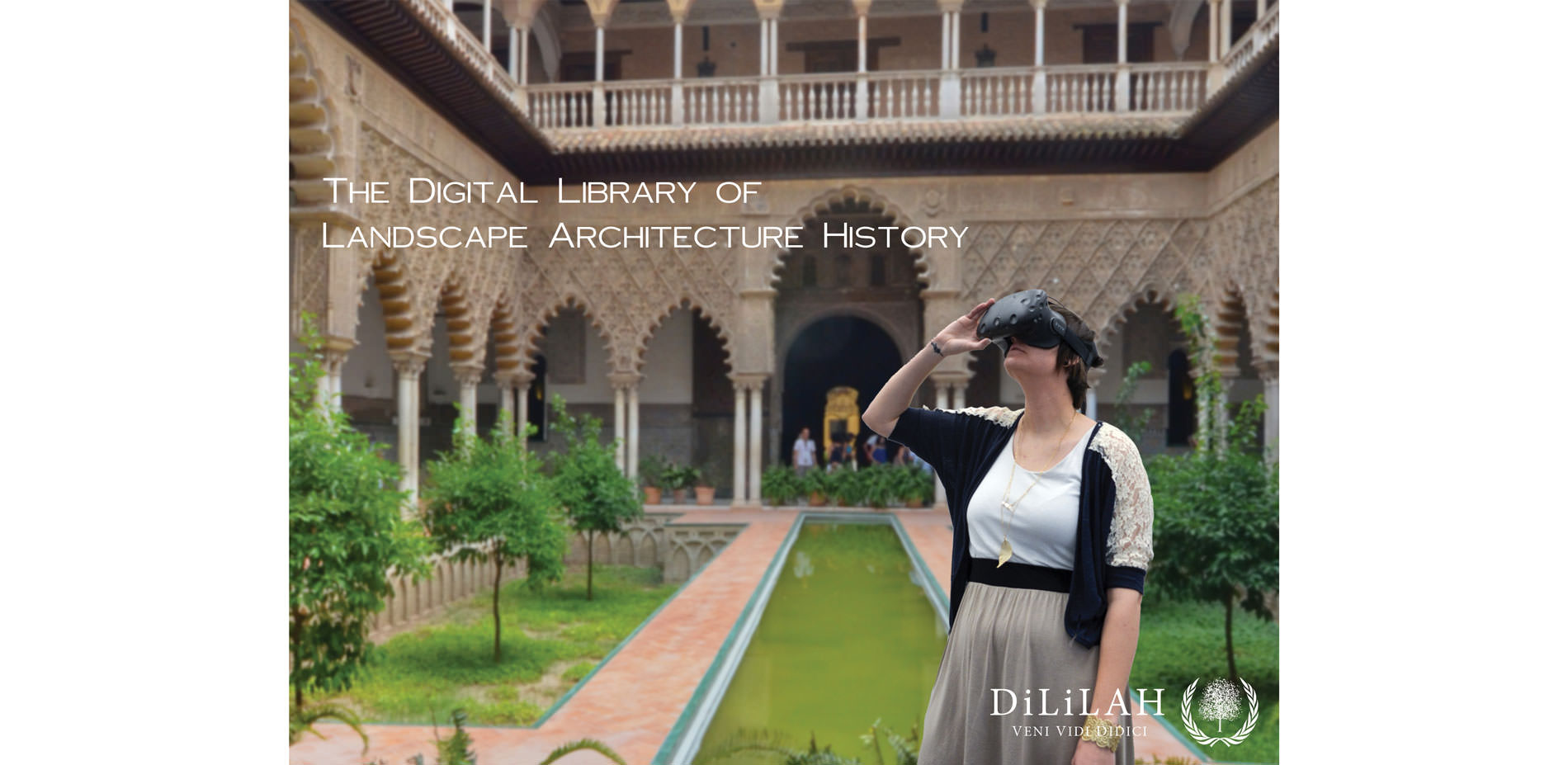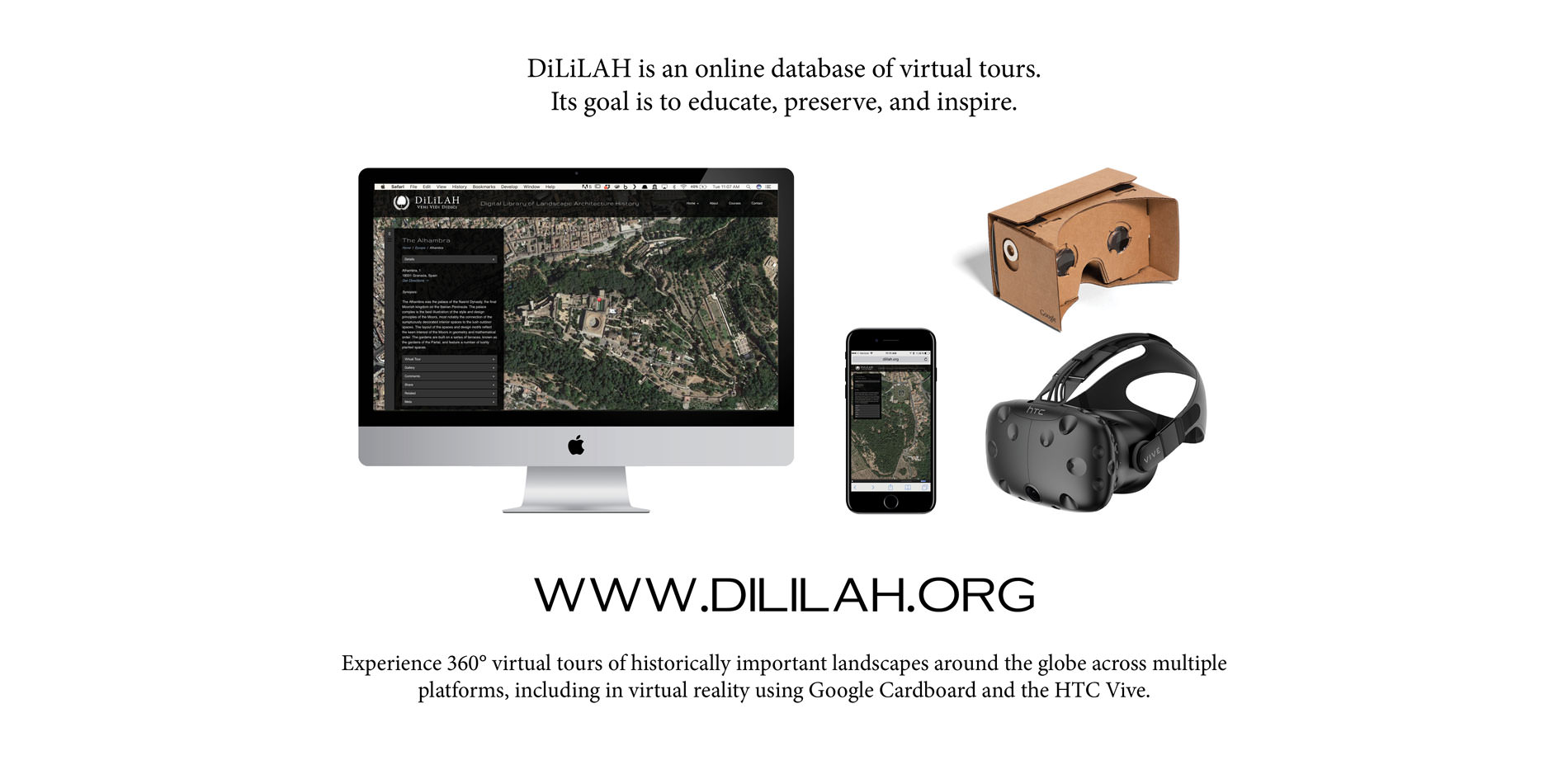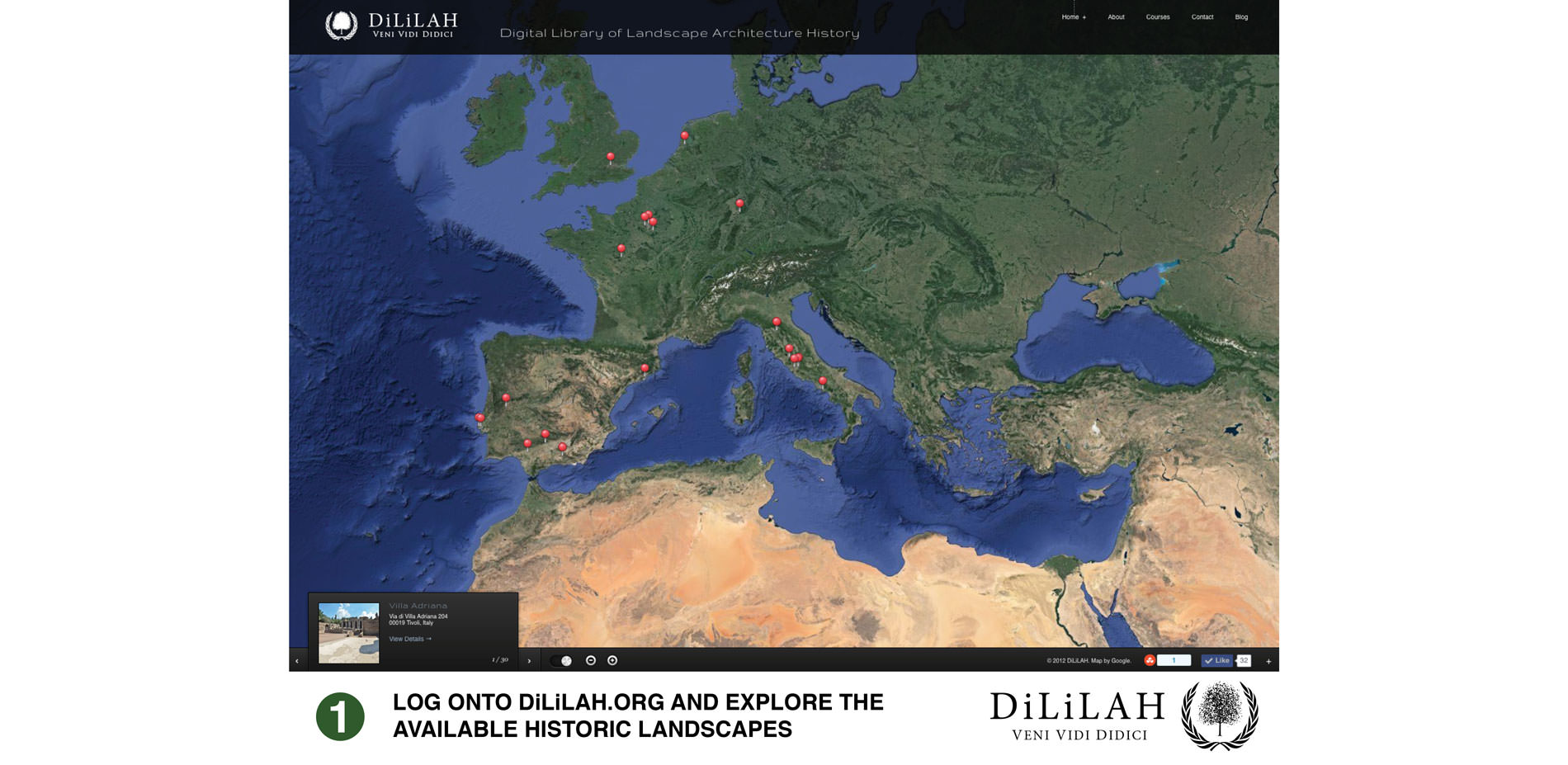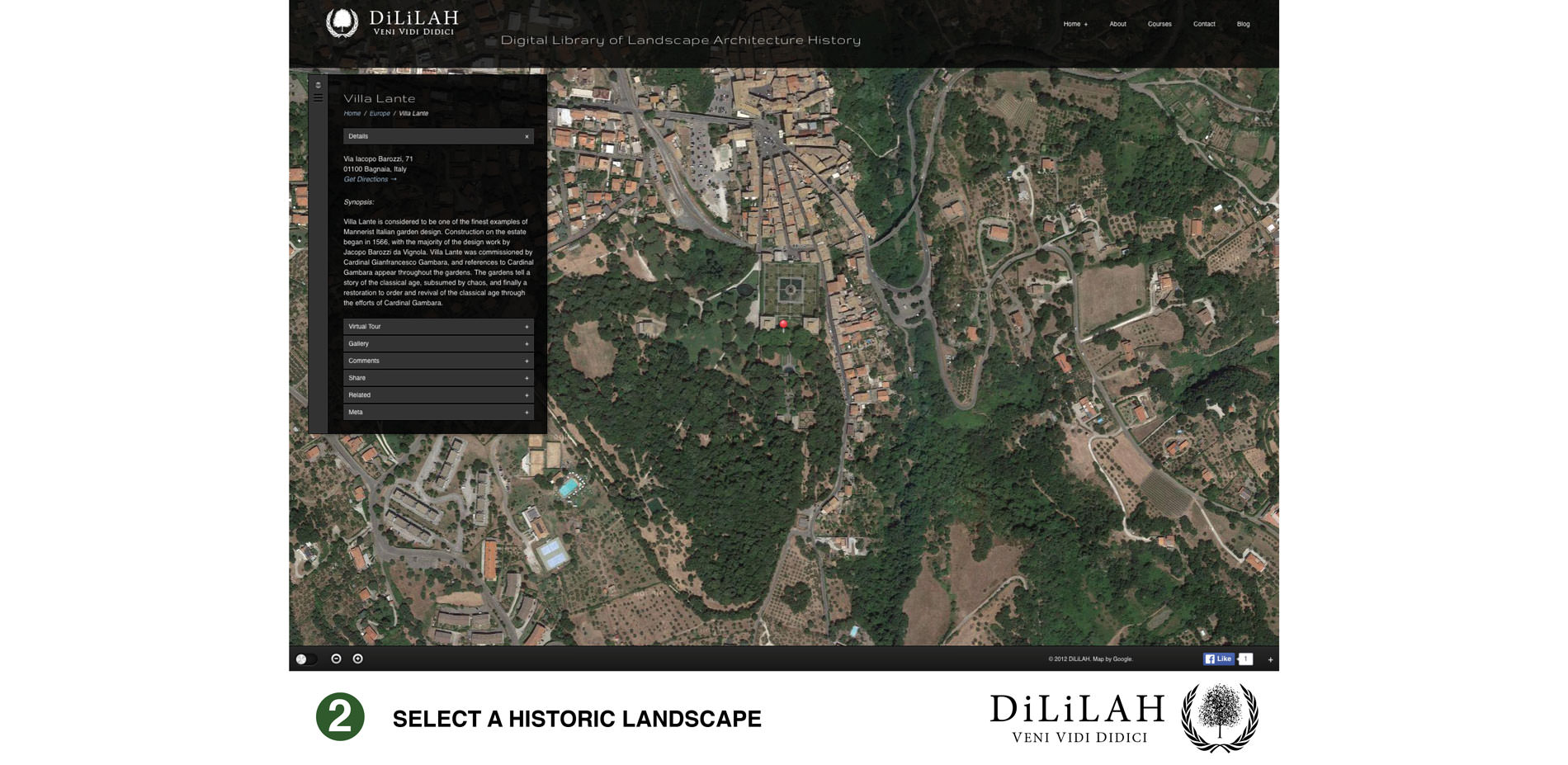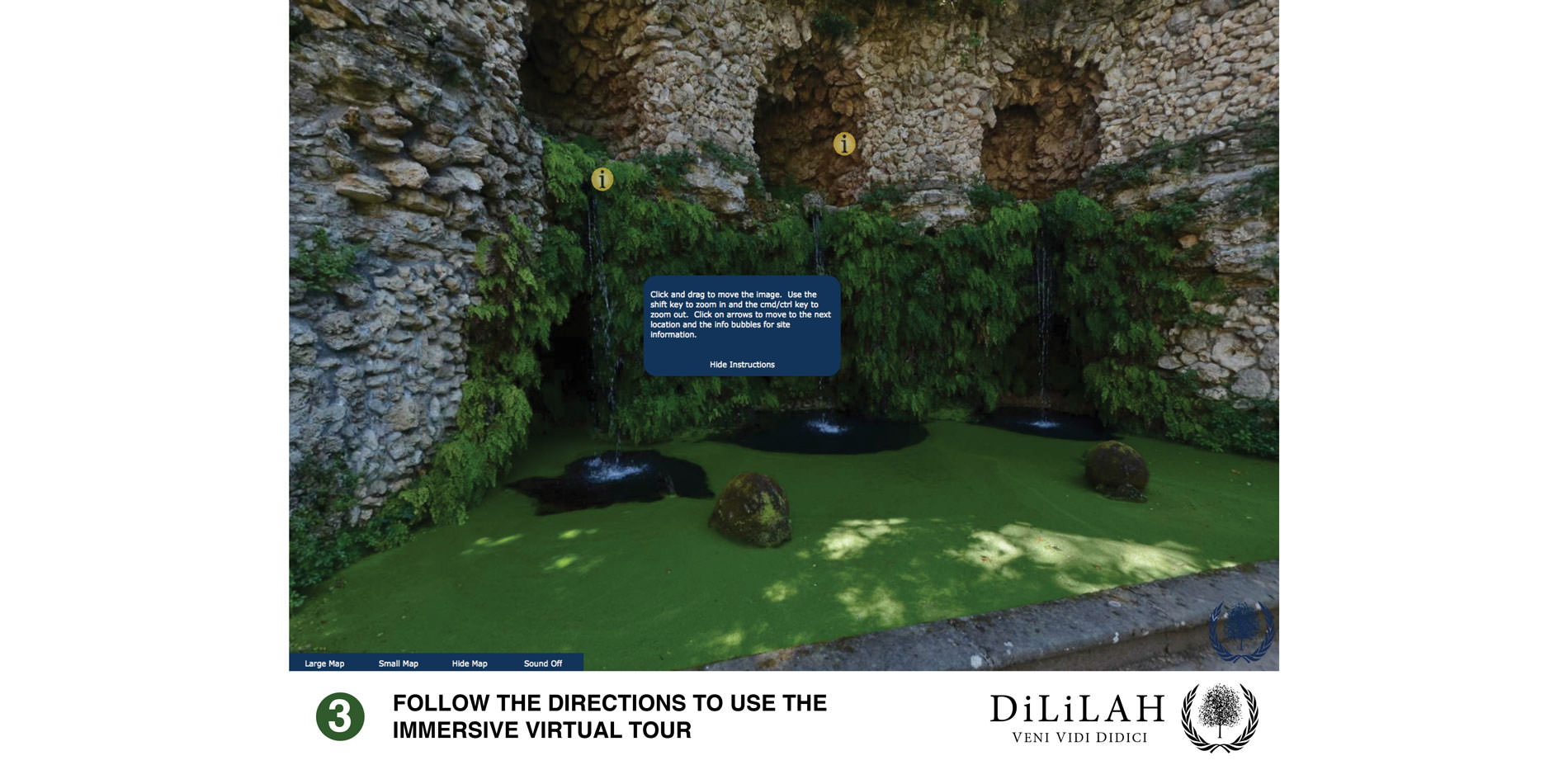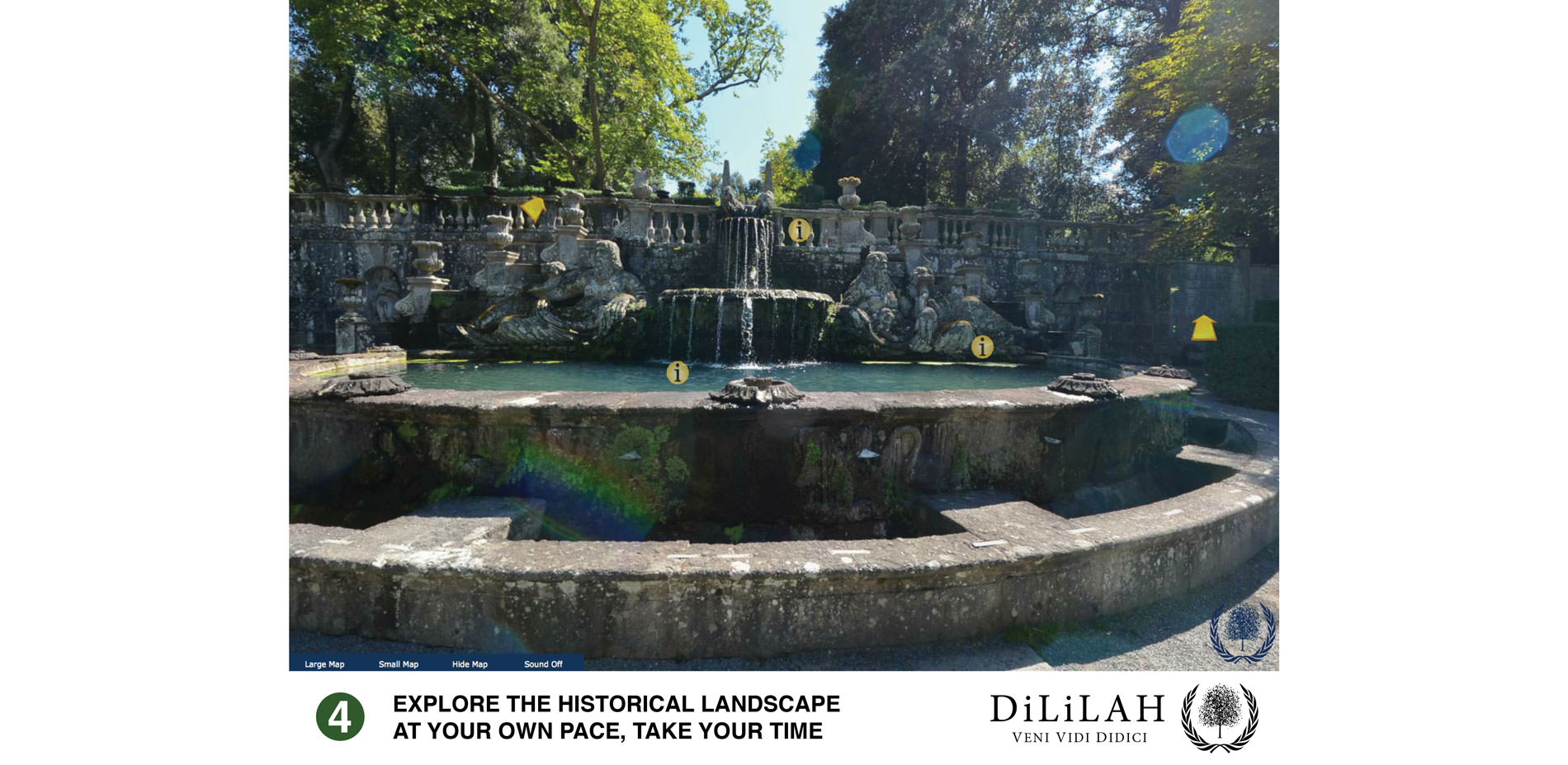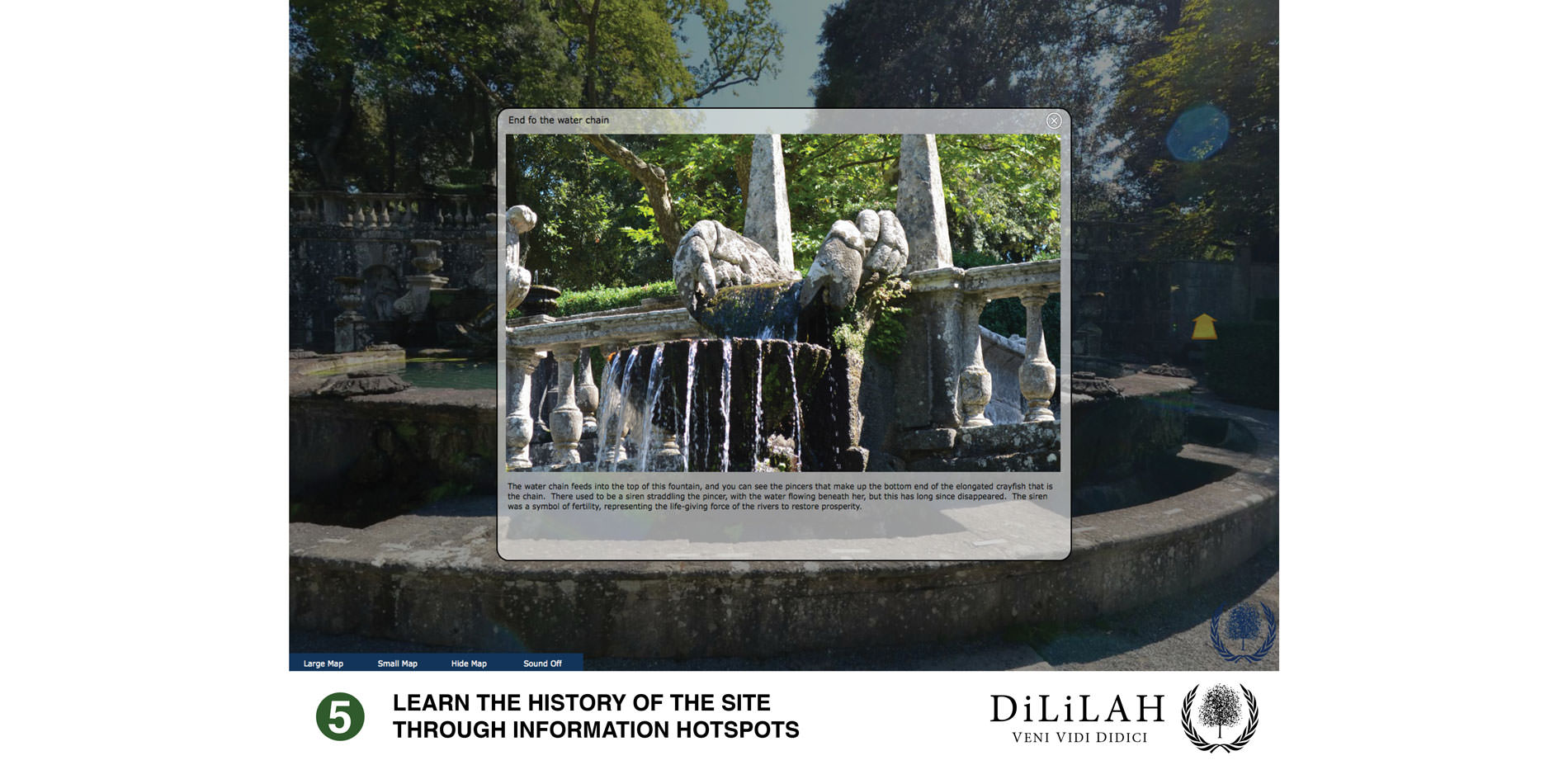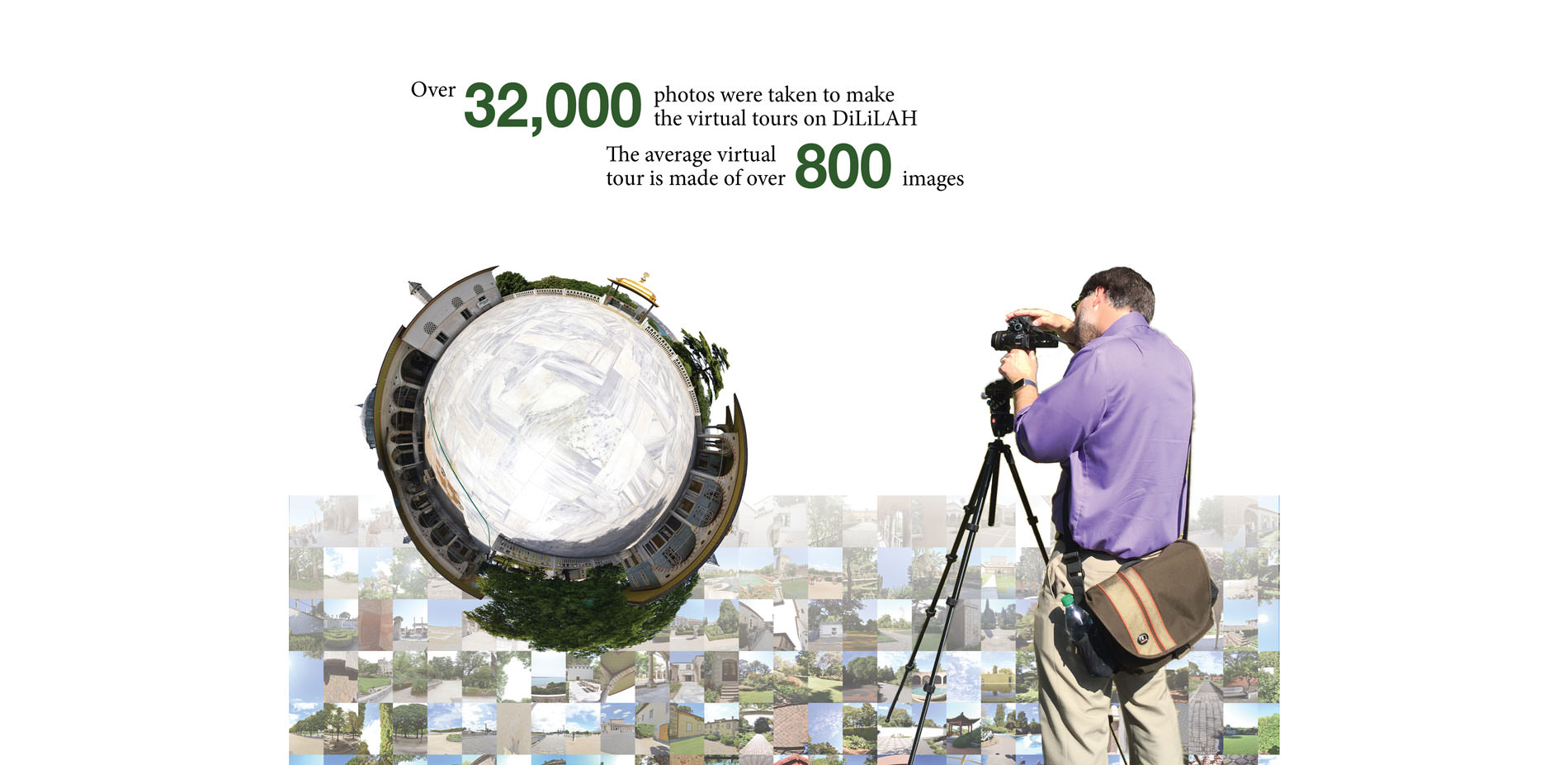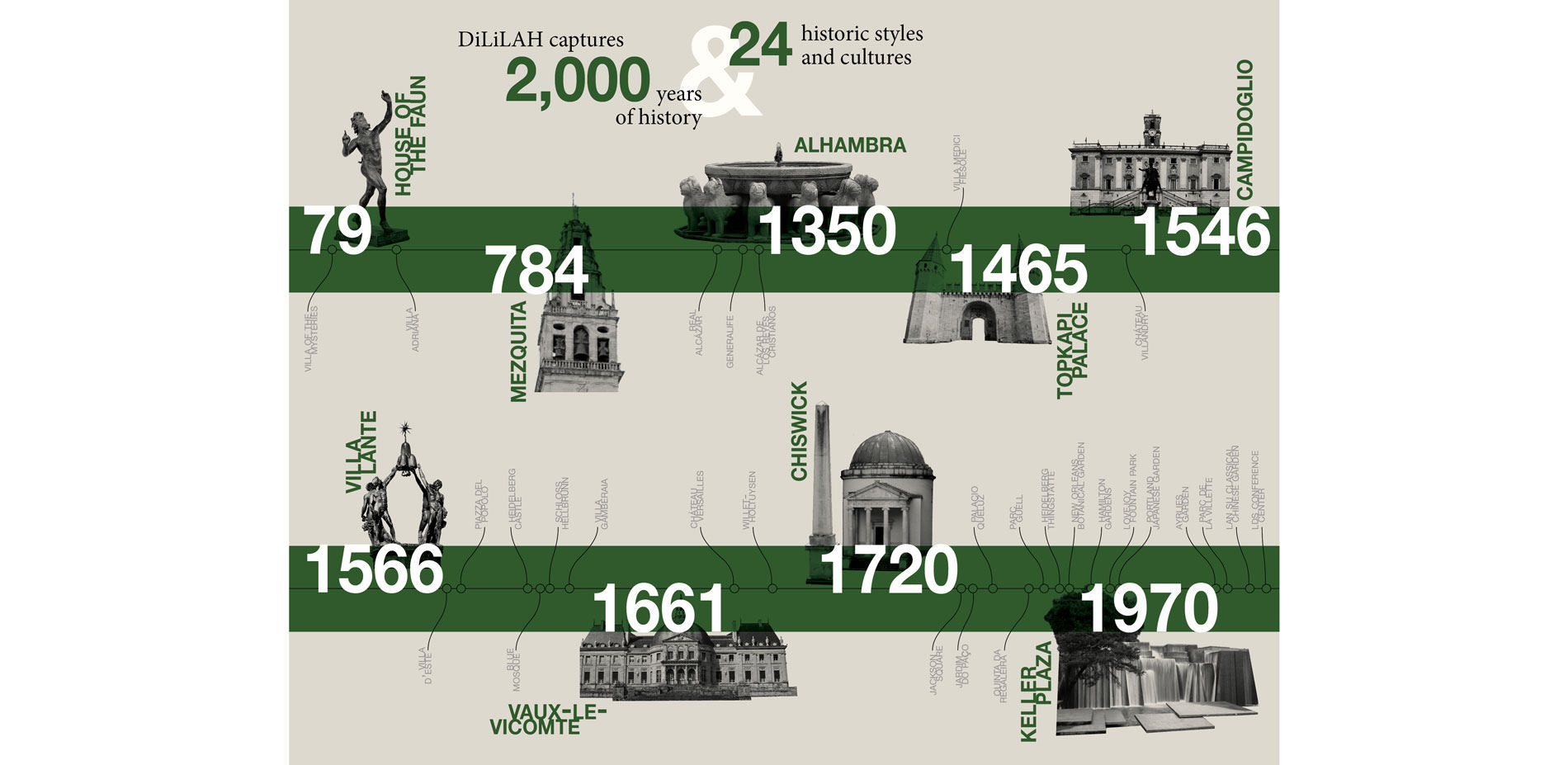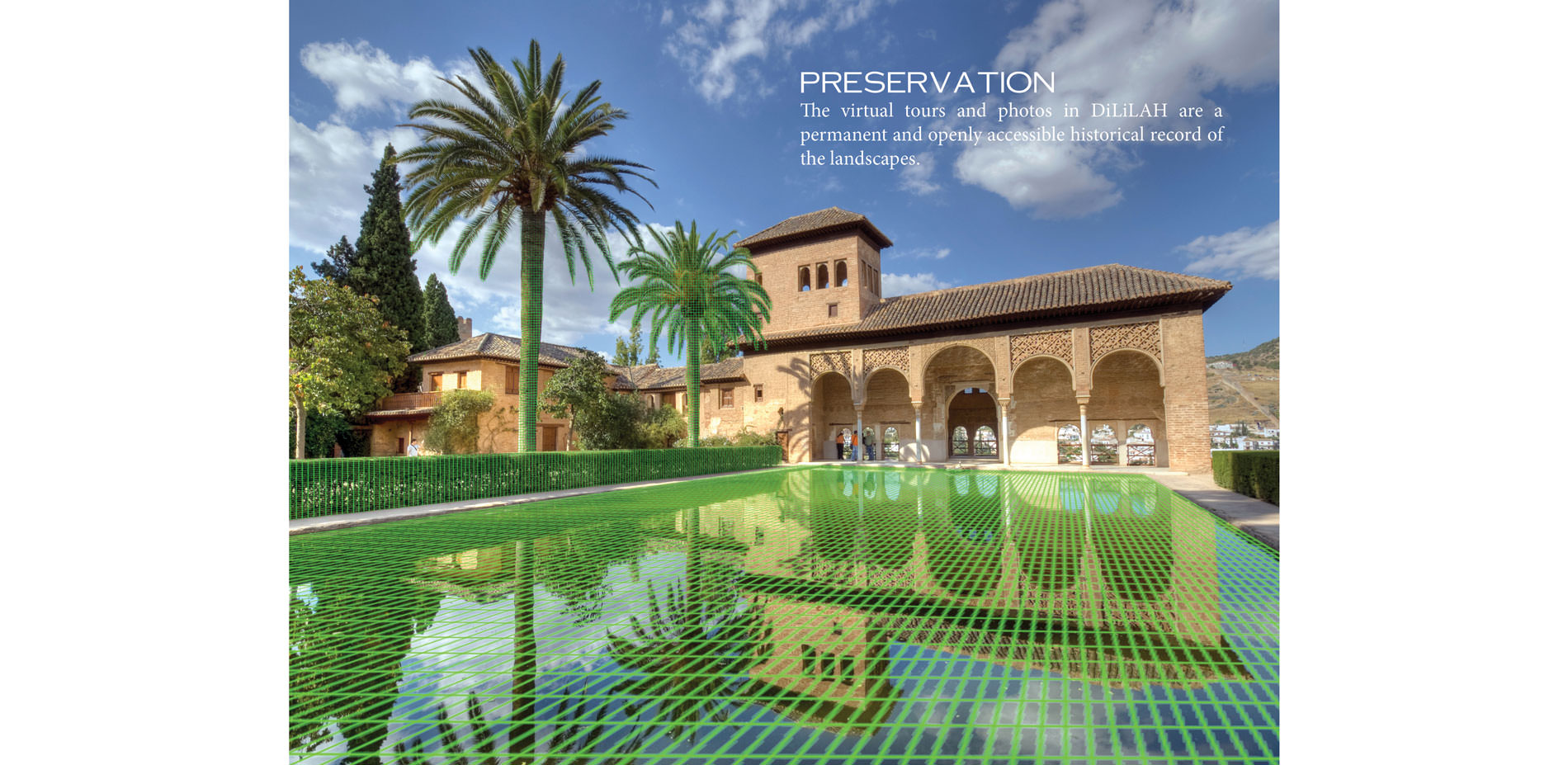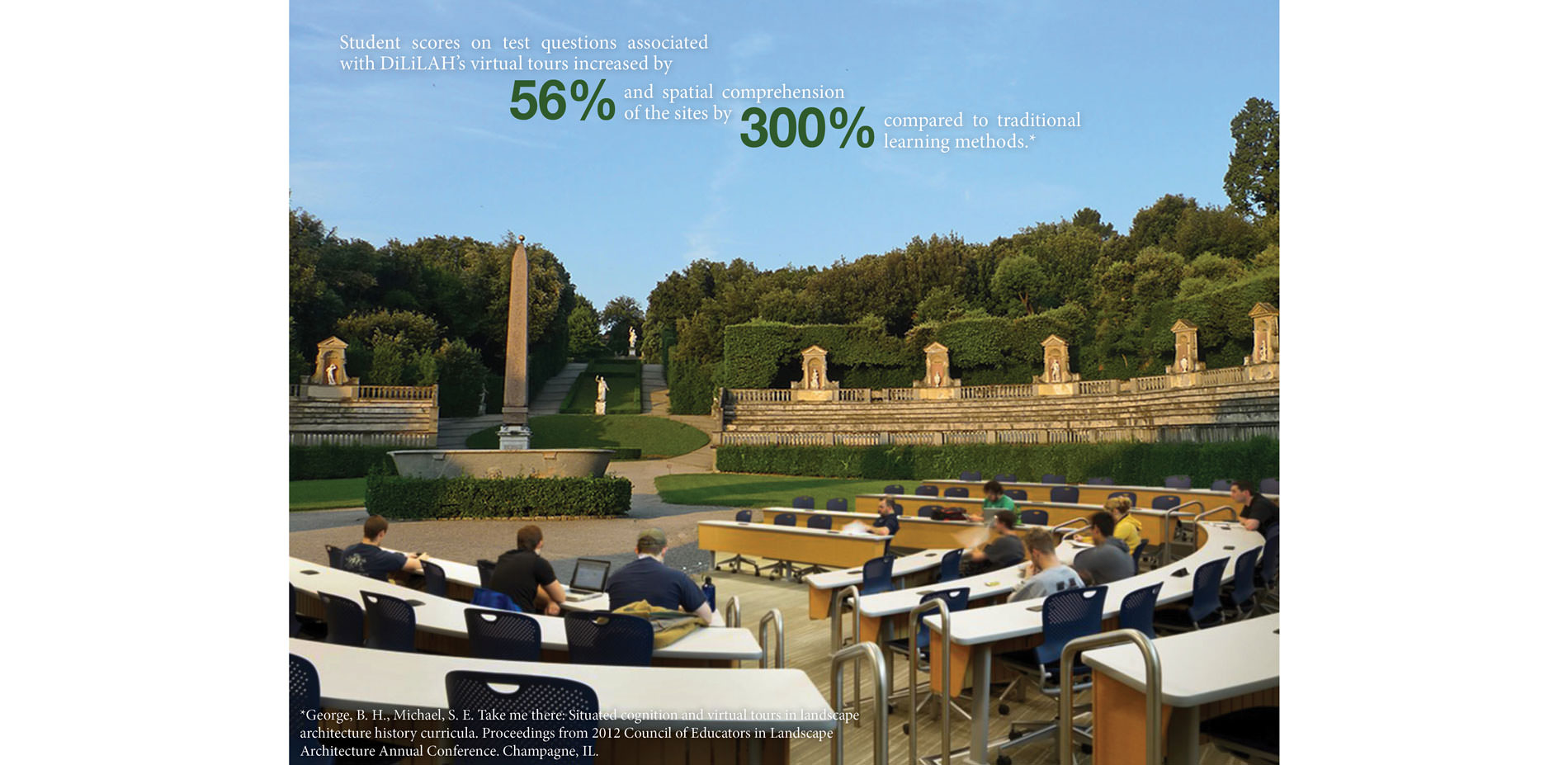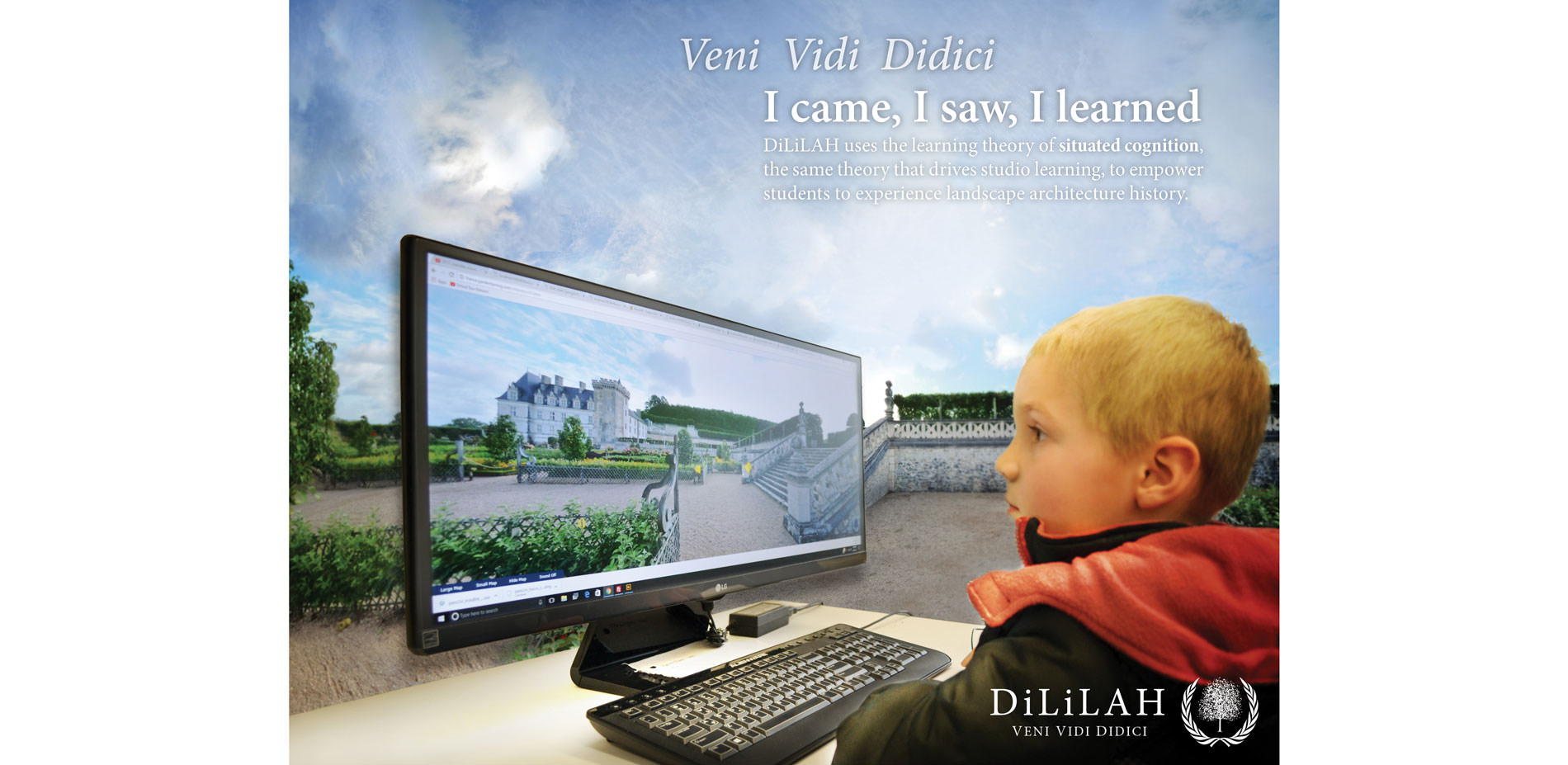Digital Library of Landscape Architecture History
Award of Excellence
Communications
Logan, UT, USA | Benjamin George, ASLA
This project is amazing; it speaks to the profession, but reaches anybody—anybody traveling. It’s really transformed the history of landscape architecture coursework. And it’s innovative.
- 2017 Awards Jury
PROJECT CREDITS
Photography Credit
- Benjamin George
Additional Project Credits
- Tonya Randall, Student ASLA, Production Assistant
- Alyssa Honey, Production Assistant;
- David Durfee, Student ASLA, Graphics Assistant
PROJECT STATEMENT
The Digital Library of Landscape Architecture History (DiLiLAH) is a freely available, online public repository of virtual tours of historical landscapes created to encourage education and exploration of historic landscapes. Using immersive panoramic tours, filled with historic information hotspots, images, sounds, and videos, students are virtually transported to important historical sites across the globe. There are currently 40 virtual tours on DiLiLAH from Europe, North America, and Oceania, representing 2,000 years of history and 24 historic styles and cultures. Over 175,000 visitors from 102 countries have accessed the website. The virtual tours are available on multiple platforms, including desktop, mobile, Google Cardboard, and immersive virtual reality headsets such as HTC Vive and Oculus Rift. DiLiLAH raises awareness and promotes the history of landscape architecture to the public through an engaging and easy to use medium. It is a valuable recruiting tool for introducing primary and secondary school students to the field of landscape architecture, and includes free education worksheets for teachers to integrate into their curriculum.
PROJECT NARRATIVE
THE IMPETUS FOR DiLiLAH
As an educator and a historian, one of the most difficult things to face is a student who is disinterested in history, yet it happens continually. This is despite the fact that where we stand today as a society, and as a profession, is the summation of all that has come before us; and to understand who we are, what we do, and why we do it, we must know the path we have collectively traveled. Perhaps it is understandable that landscape architecture students, who are so used to dealing with physical landscapes and spatial thinking, are less than enthused with reading about history. After all, how can the grandeur of Vaux-le-Vicomte, which launched a stylistic tsunami across the globe, be reduced to text?
Still, it is critical for students to understand the origins of the movements and ideas that have shaped our profession. What can be done to meaningfully engage students with landscape history? Educational research has shown that we learn best when situated within a subject; this principle is the foundation of the design studio. But how do you situate students in a topic spread over thousands of years and across the globe?
The Digital Library of Landscape Architecture History (DiLiLAH) was created to help bridge the gap of time and place in the subject of landscape architecture history. DiLiLAH is a freely available, online public repository of virtual tours of historical landscapes created for use in education. There are currently 40 virtual tours on DiLiLAH. Using immersive panoramic tours, filled with historic information hotspots, images, sounds, and videos, students are virtually transported to important historical sites across the globe. These sites are no longer just words and pictures on a page, but now they are a place to explore, a site with real structure, form, and meaning. No longer a relic of history, but real landscapes that continue to shape our world.
CREATION AND DELIVERY OF DiLiLAH
The creation of DiLiLAH began in 2012, with a month-long camping trip to Europe by Dr. Benjamin George, an assistant professor in the Department of Landscape Architecture & Environmental Planning at Utah State University. During this trip, photographs were taken of fifteen landscapes that were subsequently used to create the first virtual tours in what would become DiLiLAH for use in his history of landscape architecture course. Due to their popularity with students and repeated requests from individuals at other universities, they were made available on DiLiLAH for educational use. Over the last several years, additional tours have been added until today, forty tours are available. The tours are made using high-resolution 360-degree panoramic images. Each panoramic image requires the stitching together of 11 to 20 images, before the individual panoramas are connected through the virtual tour interface, which includes navigation elements and information hotspots.
Using panoramic imagery has the benefit of making the virtual tours widely accessible, as they consume comparatively less processor power and internet bandwidth compared to other visualization technologies. Thus, rural and disadvantaged populations, as well as those in the developing world, can more easily access the historical landscapes on DiLiLAH. Additionally, the use of panoramic imagery produces high-resolution imagery that captures minute details, such as bas-reliefs, textures and shadow patterns.
DiLiLAH will continue to expand and innovate over the coming years. An addition
al 15 virtual tours are currently in production of sites in the United States, Canada, Germany, Italy, Poland, and New Zealand, with the majority of those scheduled to be available by the end of summer. DiLiLAH is well positioned to take advantage of the recent explosion of interest in virtual reality. The virtual tours on DiLiLAH have been made accessible with Google Cardboard, and select tours are currently available for fully immersive virtual reality headsets, such as the HTC Vive and Oculus Rift. The number of virtual tours on DiLiLAH available for immersive virtual reality headsets will more than triple by the end of 2017. Additionally, there is continued emphasis on the development of innovative ways for visitors to experience the landscapes on DiLiLAH, with the development of the first 360-degree video tours already underway at a select number of sites in the United States. PURPOSE OF DiLiLAH
Using DiLiLAH, educators and students can now virtually visit and learn about historic landscapes across the globe. As a result of DiLiLAH, classes of students, whether at an urban university or a rural primary school, have the opportunity to experience the gardens of the Italian Renaissance, Moorish Spain, Ottoman Istanbul, and many others. The concept of the Grand Tour has been revived for a generation of students through a digital medium. To further improve the learning process, DiLiLAH provides free pre-packaged educational work sheets for primary and secondary teachers to utilize in their classroom for select sites. Resources such as these encourage teachers to adopt DiLiLAH in their classroom, thereby exposing their students to the profession of landscape architecture.
The initial educational mission of DiLiLAH has expanded to include historic documentation and public outreach on behalf of the profession of landscape architecture. New virtual tours are larger in scope, with more panoramic images included in each tour, ensuring that a greater portion of each site is digitally preserved and visually documented. In 2016, the majority of site visitors to DiLiLAH came from the general public, as opposed to educational institutions. This was a watershed moment for DiLiLAH, illustrating an expanding appeal to a broad audience and helping to share the story of landscape architecture with the world.
SUMMARY OF PROJECT IMPACTS
- Cataloged 40 sites in Europe, North America, and Oceania capturing sites from 2,000 years of history representing 24 historic styles and cultures.
- DiLiLAH has been accessed by over 175,000 visitors from 102 countries. Several university landscape architecture programs in the United States have utilized DiLiLAH to improve the educational experience of their students.
- The website is a valuable recruiting tool to introduce primary and secondary school students to the field of landscape architecture.
- DiLiLAH raises awareness and promotes the history of landscape architecture to the public through an engaging and easy to use medium.
- In a nationally-presented study it was found that students scored 56% higher on questions related to sites experienced with a virtual tour, and their spatial comprehension of the site improved by 300%, compared to a traditional lecture method.
- In total, the virtual tours of DiLiLAH are made from over 32,000 individual photos. Thousands of hours of labor have gone into the capture, creation, and maintenance of the virtual tours and the DiLiLAH website.
DiLiLAH is accessible at: http://www.dililah.org
